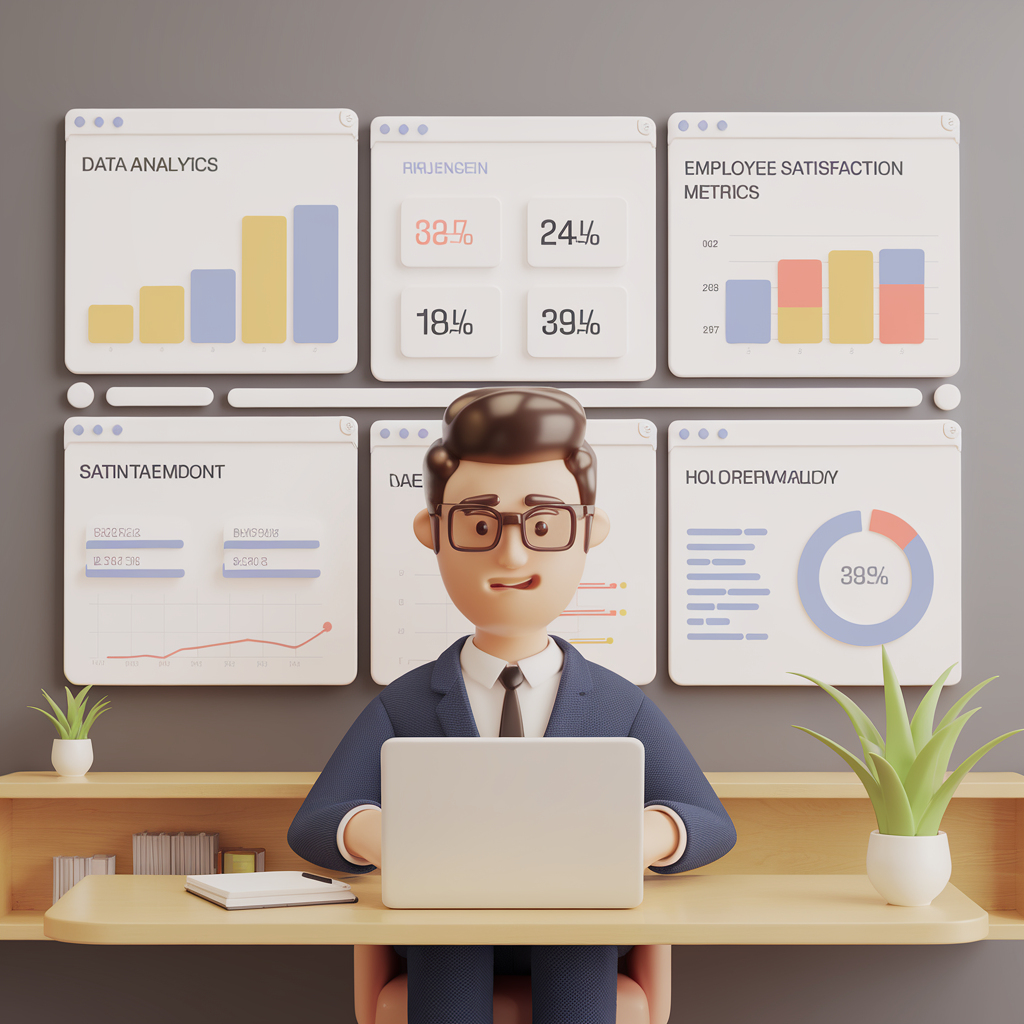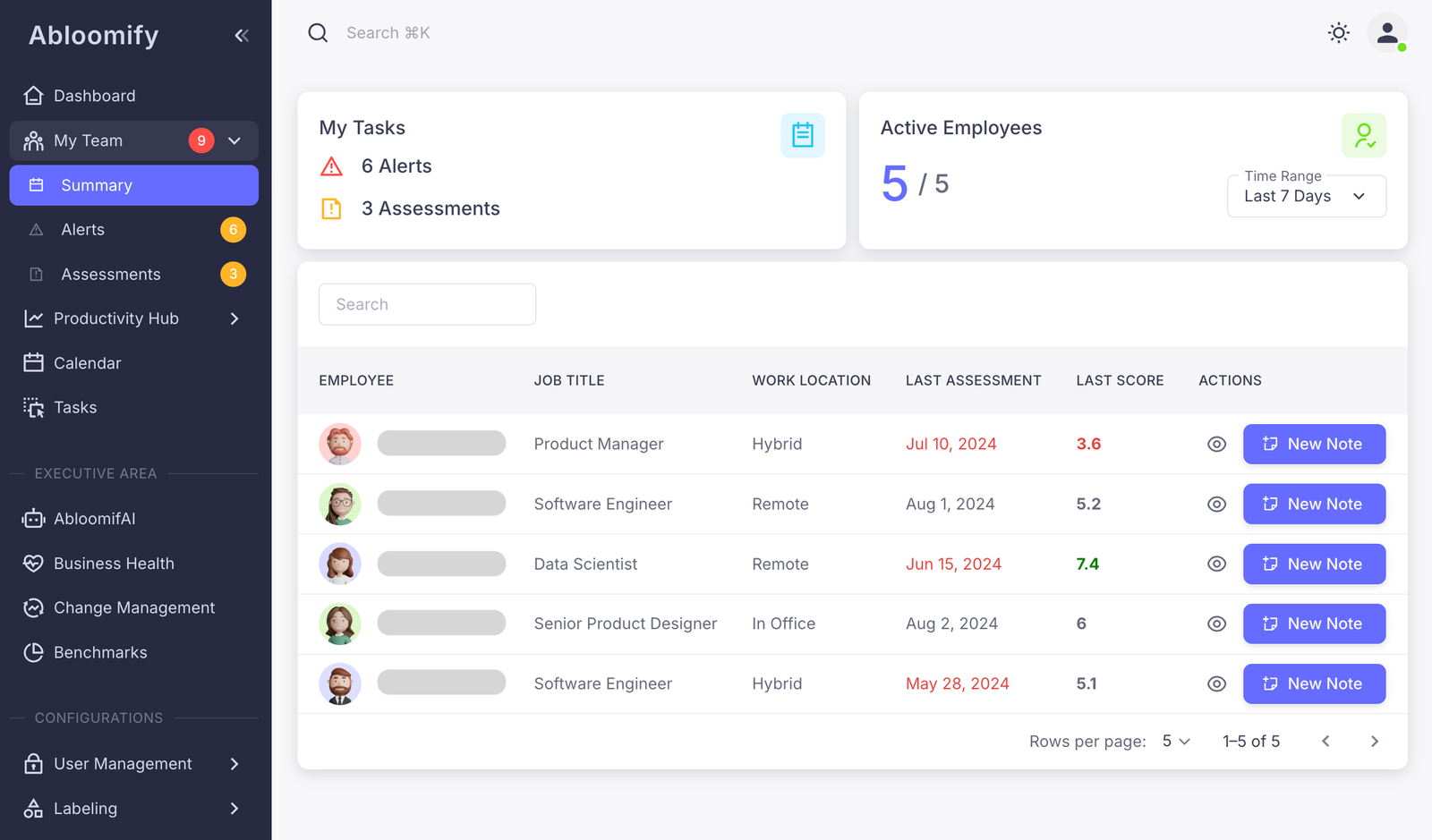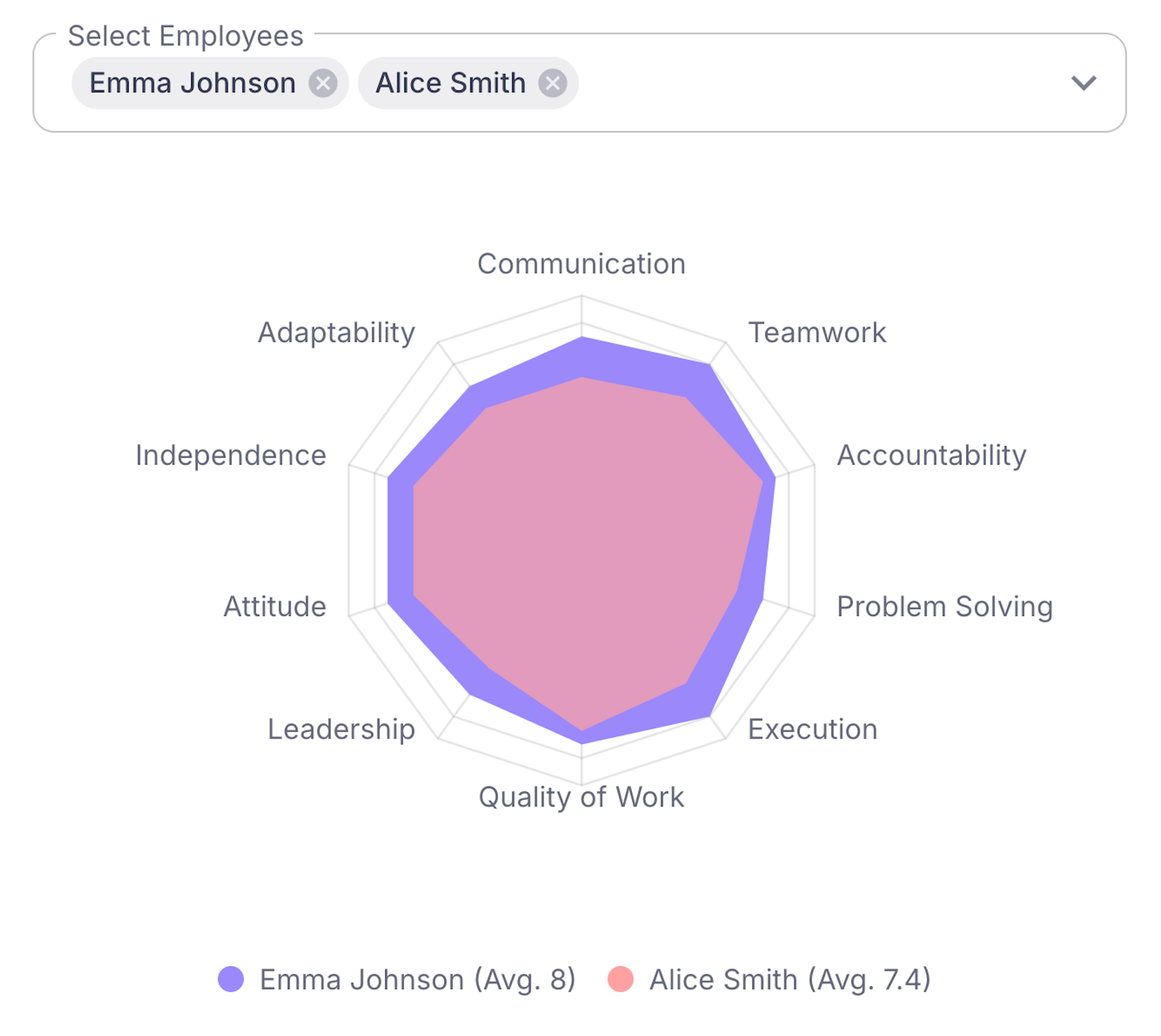Technology HR is increasingly complex, with the rise of AI offering both solutions and challenges. We’ll explore how carefully evaluating AI options can enhance HR functions, ensuring agility and resilience in tech teams.
Understanding Modern Tech HR Challenges
Tech HR leaders face a landscape of complex challenges. In tech companies, challenges such as workforce management, productivity, engagement, and scalability are omnipresent and evolving. These issues often intertwine, making them particularly daunting to navigate.
Firstly, human resources must grapple with maintaining productivity while adapting to new models of work. The shift to remote and hybrid work models demands new strategies for tracking performance and measuring output. Maintaining productivity now requires clear communication and strategically leveraging technology. Yet, managing remote teams can lead to disengagement. Employees may feel disconnected from their teams and the organizational mission.
Secondly, the industry struggles with a significant talent shortage. The demand for tech talent frequently outpaces supply, putting pressure on HR leaders to innovate their recruitment and retention strategies. This shortage means companies must be agile in sourcing talent and creative with compensation and benefits packages.
Finally, scalability presents a unique challenge for tech companies poised for growth. Efficiently scaling operations involves strategic planning in workforce management. HR teams must ensure that talent strategies align with the company’s growth trajectory. This means not only hiring at scale but also developing existing talent to take on larger roles.
By understanding these core challenges, tech HR leaders can frame solutions more effectively. For instance, to learn more about enhancing team engagement in remote settings, consider exploring increase employee engagement tips. This understanding will set the stage for exploring AI’s potential in addressing these hurdles.
The Promise of AI in Tech HR
Integrating AI within tech HR isn’t just an upgrade. It is a transformation of how companies manage their human resources. AI addresses pressing HR challenges through automation and data analysis. This shift allows for enhancing productivity and strategic decision-making.
Traditional HR often grapples with manual processes, limiting efficiency. AI obliterates these limitations by streamlining administrative tasks. Imagine AI-driven platforms that automatically shortlist top candidates or recommend personalized training for employees. Such tools not only save time, they enable HR teams to focus on strategic initiatives.
AI excels in talent management and productivity. By analyzing performance data, AI identifies high-potential employees, predicts turnover risks, and enhances engagement strategies. This approach allows HR leaders to build, develop, and retain high-performing teams more effectively than traditional methods allow.
In decision-making, AI provides data-backed insights, improving the quality and speed of choices. Whether it is predicting hiring needs or determining compensation strategies, AI offers analyses that are both reliable and rapid. In contrast, traditional approaches struggle with the volume and complexity of modern data.
Consider integrating AI in your performance management strategies to unlock new potential. By leveraging AI, tech companies can address HR challenges with precision and agility, a necessity in an ever-evolving workplace landscape. For more insights on workforce management in the AI era, consider exploring resources that expand on these strategies.
Evaluating AI Solutions Effectively
To evaluate AI solutions effectively, tech HR leaders must balance several crucial factors. Integration ease is essential, as AI should seamlessly fit into existing HR tech stacks. Consider the AI’s compatibility with current platforms. Successful integration minimizes disruption and improves productivity.
Data privacy stands paramount, especially as AI processes sensitive employee data. Prioritize solutions with robust security protocols and compliance with regulations like GDPR. Engaging in an in-depth evaluation of data handling practices is non-negotiable. It’s about protecting not just data, but also trust.
User-friendliness determines how swiftly teams can adapt to new tools. Involve end users in demos and feedback sessions to gauge usability. Effective AI should empower, not alienate, users. This step ensures that the transition to AI-powered HR is smooth and accepted by the workforce.
Scalability is vital for growing tech companies. Choose AI solutions that can expand alongside business growth. Consider potential future needs, not just current ones, to avoid frequent system overhauls.
Lastly, AI capabilities in providing actionable insights distinguish truly transformative solutions. Evaluate algorithms for their ability to analyze data and deliver strategic guidance. AI should not only automate processes but also add value through insights.
Consider the case of a tech firm that successfully implemented an AI-driven performance management system. Their evaluation process included these criteria, leading to significant improvements in employee engagement and decision-making, as covered in Employee Performance Review Mastering. Emulate this rigorous approach for successful AI evaluation.
Integrating AI with Existing Systems
When integrating AI-powered platforms like Abloomify with existing HR systems, tech leaders often face the challenge of ensuring seamless connectivity without disruptions. Yet, Abloomify’s design-centric approach addresses these challenges effectively by offering a range of integration tools crafted for ease and efficiency.
First, consider the importance of compatibility. Abloomify ensures compatibility with widely used HR platforms, facilitating seamless data exchange. This eliminates the need for constant manual updates, reducing administrative load. For HR systems running on disparate databases, integration often seems daunting. Abloomify tackles this through its Robust Data Connector, allowing for swift and accurate data synchronization.
Another challenge is workflow disruption. Minimizing workflow disruption is crucial for maintaining productivity. Abloomify offers an intuitive interface designed to resemble existing systems, which means reduced learning curves for HR personnel. This user-friendly design allows teams to focus on strategic tasks rather than fiddling with tech.
Furthermore, integrating AI systems can lead to concerns about data privacy. Abloomify employs advanced encryption methods to safeguard sensitive HR data during integration processes. This commitment to security does not compromise speed or functionality.
Finally, the challenge of maintaining agile processes amid integration is addressed by Abloomify’s Continuous Support Tool. This feature assists in adapting integrations as business needs evolve, ensuring HR leaders maintain operational flexibility.
Choosing the right tools and approaches, like those from Abloomify, is critical for successful AI integration. For more detailed insights into robust AI solutions, explore the best AI-driven HR solutions for tech teams.
Leveraging AI for Performance Management
AI tools are redefining how performance management operates, offering nuanced insights through ongoing assessments and feedback loops. Platforms like Abloomify’s AI Manager Copilot stand at the forefront, harnessing continuous data streams to craft a more thorough understanding of employee performance. Here’s how this revolutionizes performance management:
- Continuous Assessments: Unlike traditional models relying on periodic reviews, AI offers real-time insights. Performance metrics are constantly updated, providing an ever-evolving picture of employee contributions.
- 360° Feedback: Integrating AI assists in managing and interpreting comprehensive feedback. By analyzing feedback from peers, subordinates, and supervisors, AI distills key themes and highlights actionable insights.
- Productivity Monitoring: AI can track various productivity indicators, from task completion rates to time spent on specific projects. This helps managers pinpoint productivity bottlenecks and areas of excellence.
A standout feature of the AI Manager Copilot is its ability to identify performance trends over time. By analyzing metrics across different periods, it can highlight consistent strengths or emerging weaknesses in an individual’s performance. This proactive approach means managers can intervene before issues become systemic.
Moreover, this tool aids in burnout prevention. By monitoring key indicators like overtime hours and work pace, it can signal when employees are at risk of burnout. Taking a data-driven approach allows for preemptive support interventions, solidifying a culture of care and balance.
For more insights on elevating performance management strategies, explore Abloomify’s take on how performance management systems work in the digital era.
Workforce Planning with AI Insights
In corporate ecosystems, gauging future workforce capabilities is paramount. AI, like Abloomify, is revolutionizing workforce planning, offering insights that are dynamic and adaptable. Such technologies delve into capacity planning and succession strategies, especially for remote and hybrid teams.
Consider remote teams where workload distribution appears murky. AI tools analyze previous project data and employee performance metrics to predict future capacity needs. This allows HR leaders to proactively address potential bottlenecks. Abloomify’s platform, for example, employs algorithms to assess workload balance and recommends redistributions. This adaptive approach caters to organizations of various structures, ensuring no one is left grappling in the dark.
Succession planning is another arena where AI shines. Traditional methods often rely on manual tracking and intuition, which can be rife with oversight. AI evaluates employee trajectories and skill growth to pinpoint who might seamlessly fill future leadership roles. With platforms like Abloomify, organizations can:
- Identify high-potential employees using data analytics.
- Develop tailored growth plans aligning with company goals.
- Predict workforce attrition risks more accurately.
The insights are not just reactive but anticipatory, empowering HR with a robust toolkit to manage transitions effectively. By adjusting strategies based on real-time data, companies can smooth over disruptions and maintain strategic alignment. For a deeper understanding of workforce analytics, explore this resource on Abloomify. AI’s role in workforce planning is transformative, ensuring efficiency whether teams are in-office, remote, or hybrid.
Developing Skills and Career Paths with AI
Career development is a vital element for tech teams striving to keep pace with ever-evolving industry demands. Artificial intelligence can catalyze this process by personalizing career paths and skill enhancement. Abloomify’s AI-driven career path planning and skill recommendations offer advanced capabilities that benefit both employees and organizations.
Here’s how AI enhances career development:
- Personalized Skill Recommendations: AI analyzes an individual’s current skill set and industry trends. It recommends tailored learning paths that focus on upskilling or reskilling, ensuring relevancy and efficiency.
- Dynamic Career Pathing: AI can map out potential career trajectories based on the individual’s strengths and organizational needs. This helps tech professionals visualize their future within the company.
- Real-Time Feedback: AI platforms can offer constructive feedback rapidly, thereby enabling employees to adapt and grow in real-time.
The impact of AI on employee retention and satisfaction can be profound:
- Increased Engagement: Employees feel more engaged when they see a clear path for career advancement.
- Retention Boost: Tailored career development increases job satisfaction, thereby decreasing turnover.
Organizations not only retain talent more effectively but also cultivate a workforce that is more skilled and adaptable. For those seeking insights into workforce analytics, such AI solutions offer a strategic advantage, enhancing both individual growth and organizational performance.
Change Management and Optimization Strategies
Organizational change often feels like trying to fix a plane mid-flight. However, AI’s role in simplifying and optimizing this process offers a glimmer of hope for tech HR leaders. AI solutions, like those offered by Abloomify, provide tools to assess the impacts of new processes effectively, thus aiding in smooth transitions.
These tools provide real-time data-driven insights, allowing HR leaders to:
- Evaluate how newly implemented technologies affect workflows.
- Identify bottlenecks and create strategies to eliminate them.
- Predict potential disruptions and prepare proactive solutions.
When considering cost efficiency, evaluating AI solutions becomes crucial. Over-licensed software is a hidden budget buster. AI platforms can analyze license usage, showing exactly where and how resources are being employed. This empowers leaders to reduce waste and optimize spending. A smart approach to managing these licenses can lead to significant savings.
Moreover, AI aids in the transition by ensuring team adaptation at individual and collective levels. Through feedback loops and employee behavior analysis, AI solutions can recommend further skill development needs. This connects with the previous chapter’s discussion on AI-driven career path planning and skill recommendations, contributing to employee satisfaction and retention.
In rapidly changing scenarios, AI does not just manage change; it optimizes the entire ecosystem, paving the way for a more streamlined process. As performance management remains a focus, explore resources on AI-driven workforce management for further strategies.
Building a Privacy-First AI Environment
In the realm of tech HR solutions, creating a secure AI environment isn’t just a policy choice—it’s a necessity. The approach to guarantee privacy-first implementation spans several key strategies. Abloomify, for instance, exemplifies this commitment by embedding privacy principles into its core functionalities. Here are the methods they use to ensure a privacy-first AI landscape:
– Data Minimization: By reducing the amount of data collected to only what’s essential, Abloomify minimizes potential exposure.
– Aggregation Over Individual Tracking: Instead of zooming in on individual behaviors, they focus on aggregate insights. This broad analysis protects personal privacy while still providing valuable organizational insights.
– Transparency: Making their data policies open and clear helps build employee trust. Transparency ensures users understand what data is utilized and how.
Creating trustworthy AI solutions requires more than just technical measures. It necessitates an organizational culture that embraces privacy by design. Prioritizing non-invasive data collection methods and consistently reassessing data handling protocols ensures compliance and enhances employee confidence.
Abloomify’s commitment to privacy helps navigate this complex landscape. They balance insights and confidentiality by adopting industry-leading practices. By focusing on these key strategies, organizations can manage workforce challenges without compromising individual privacy.
Integrating a privacy-first approach doesn’t just protect data. It fosters an environment of trust, leading to improved employee engagement and cooperation. Privacy-first practices are essential not only for compliance but also for building enduring partnerships with employees. Explore more about AI-driven workforce management solutions to transform your HR strategies.
Final words
AI offers substantial benefits for tech HR, but careful evaluation is crucial for success. Abloomify provides comprehensive solutions, enhancing productivity and decision-making. For tailored strategies to optimize your team, contact us today.



